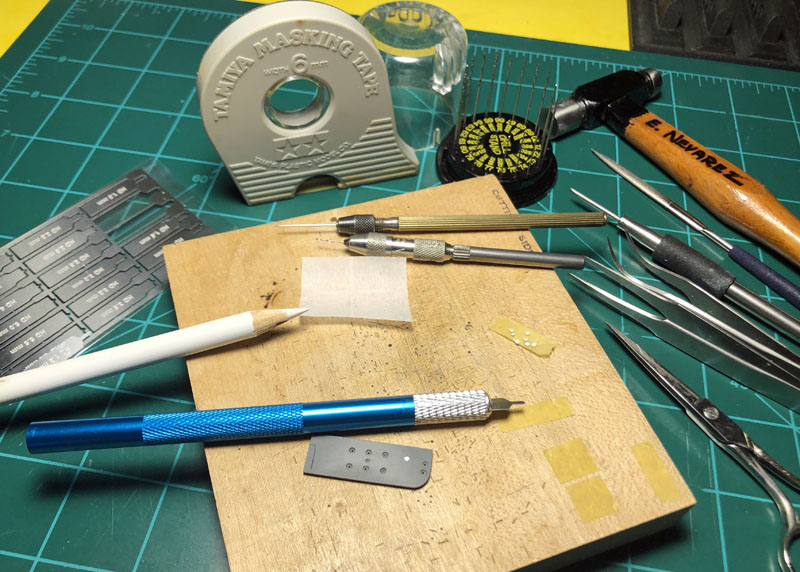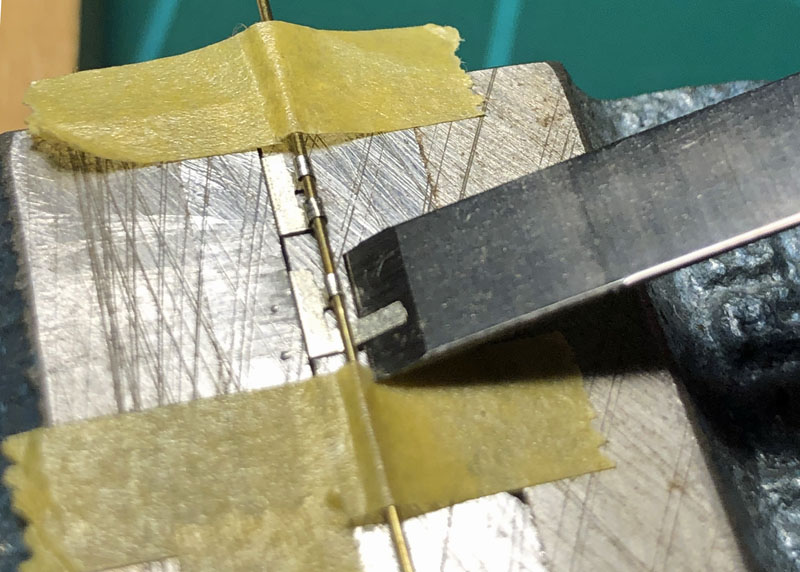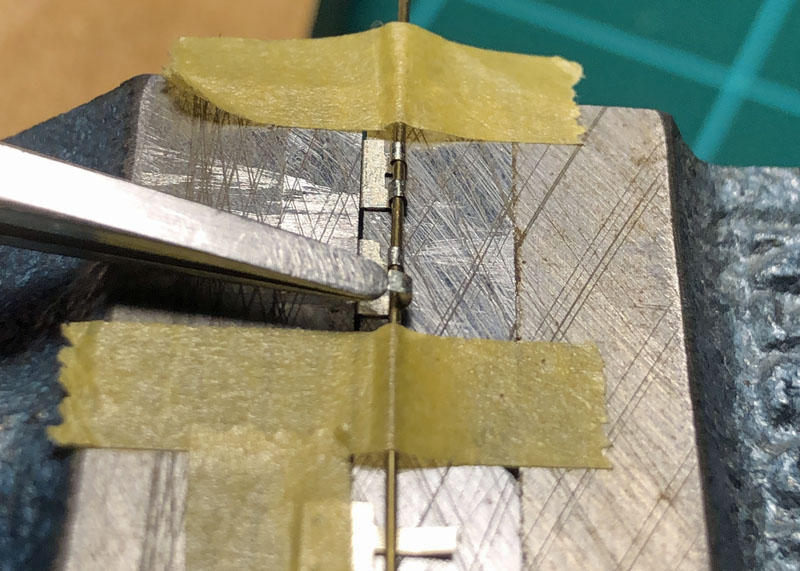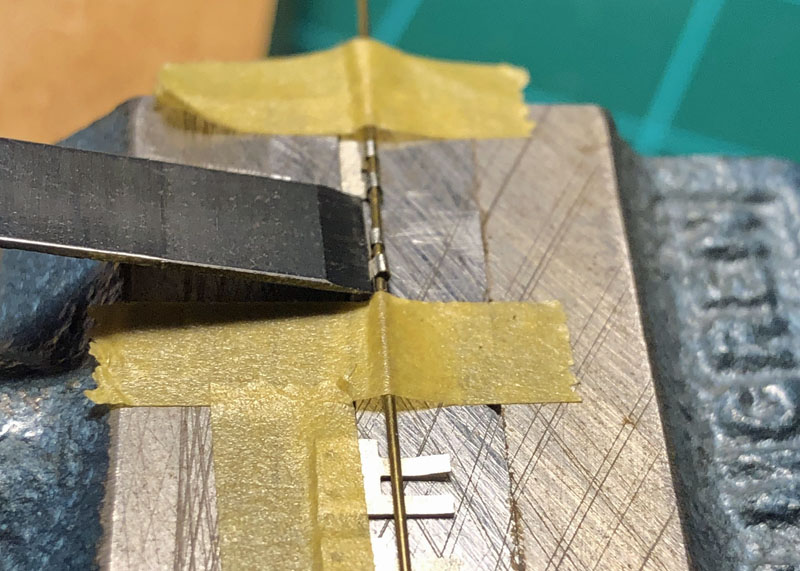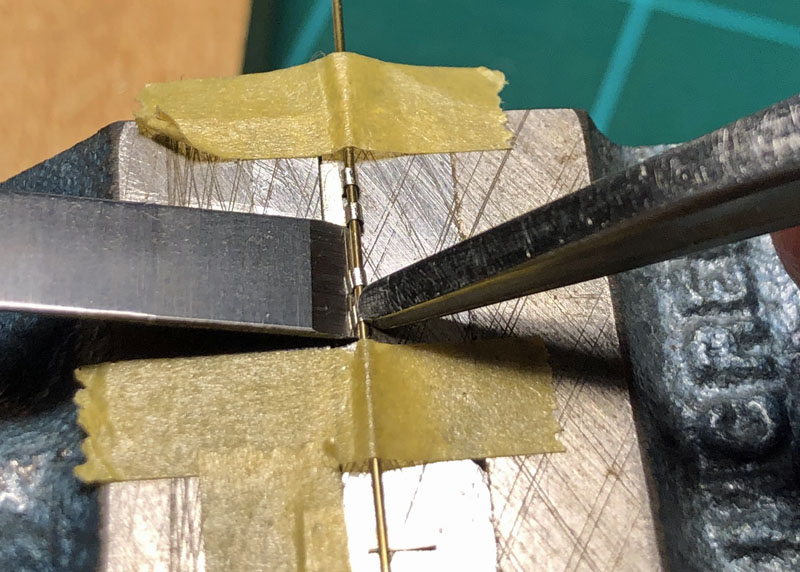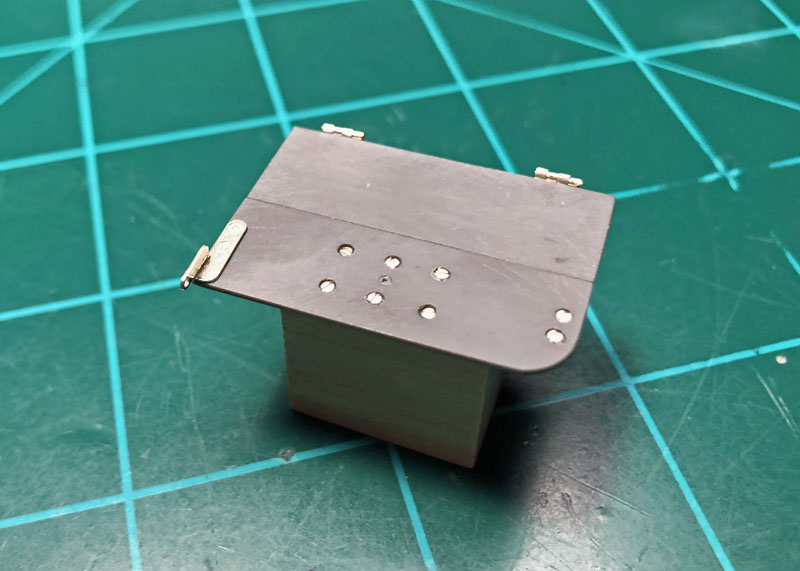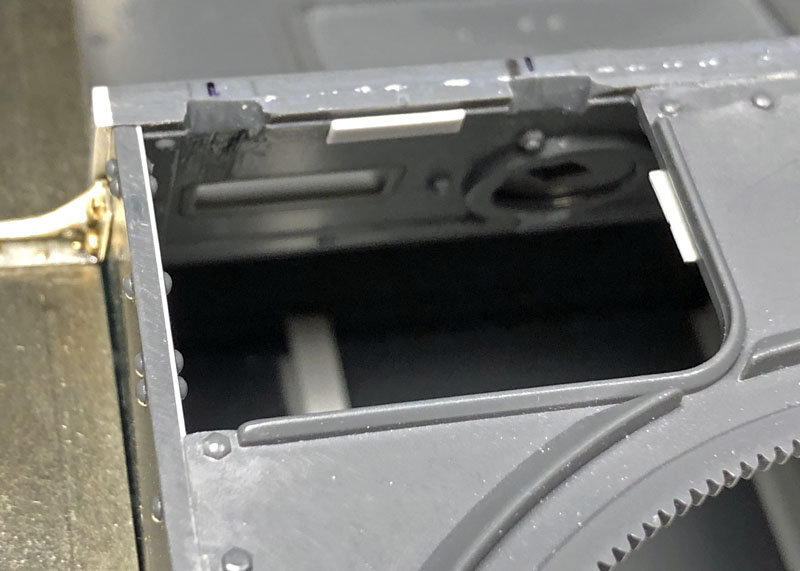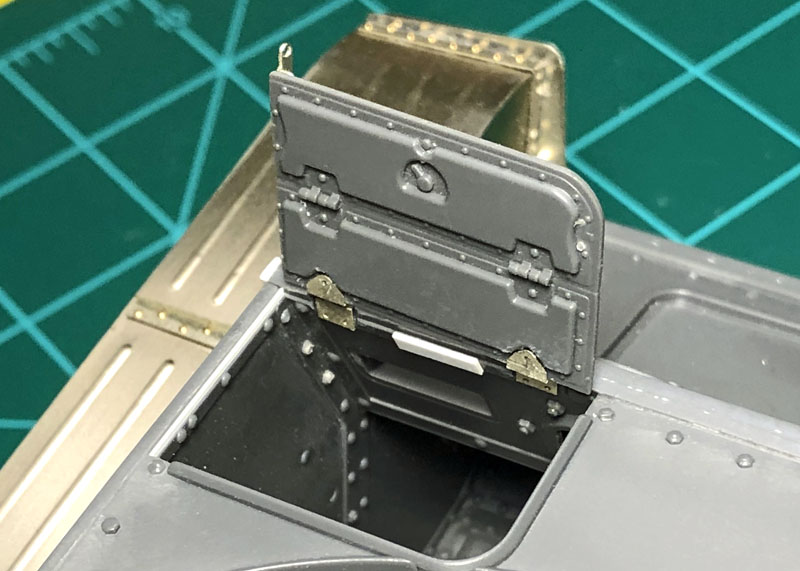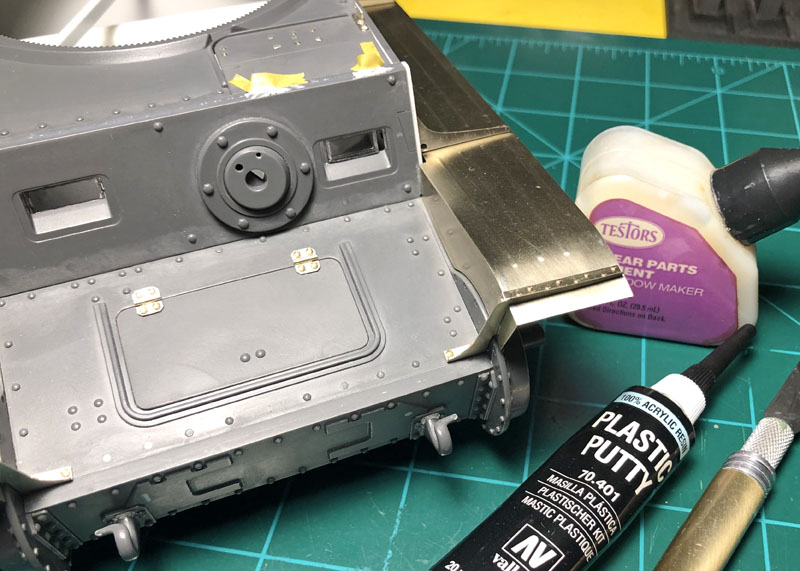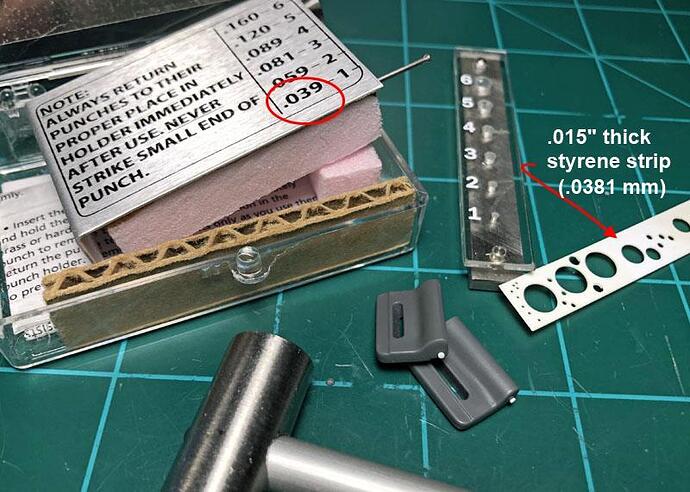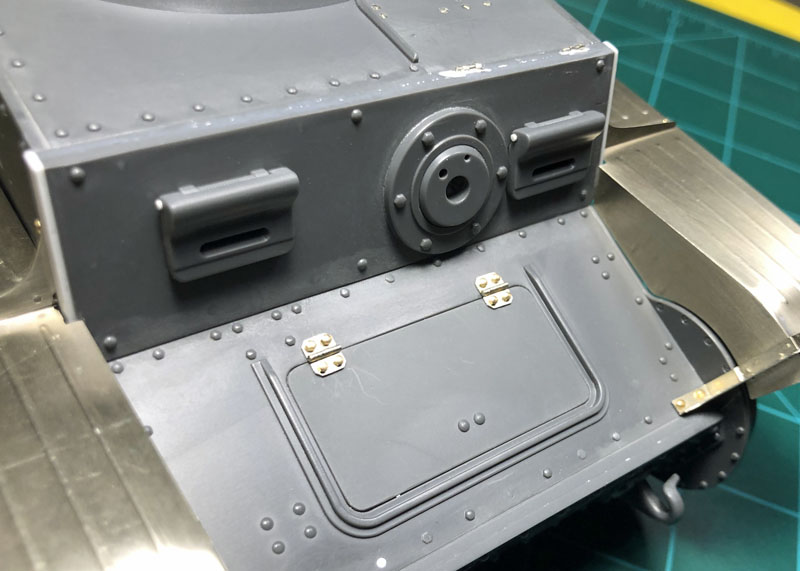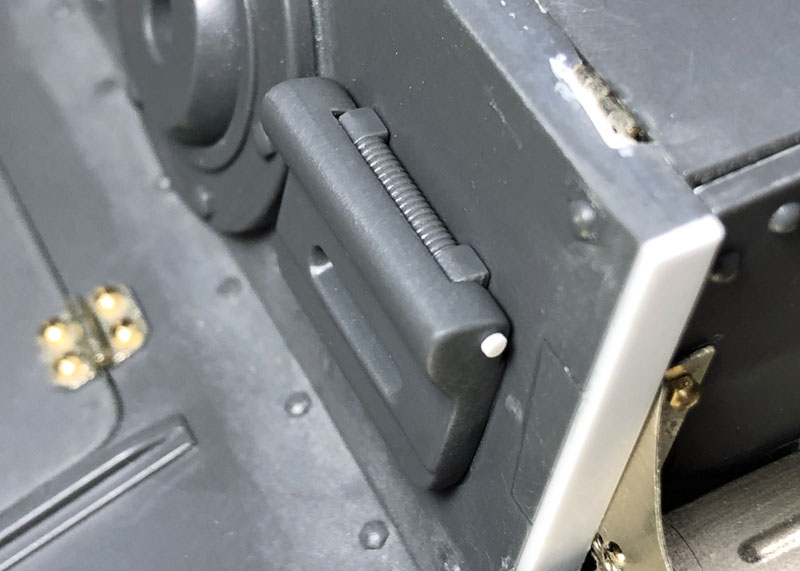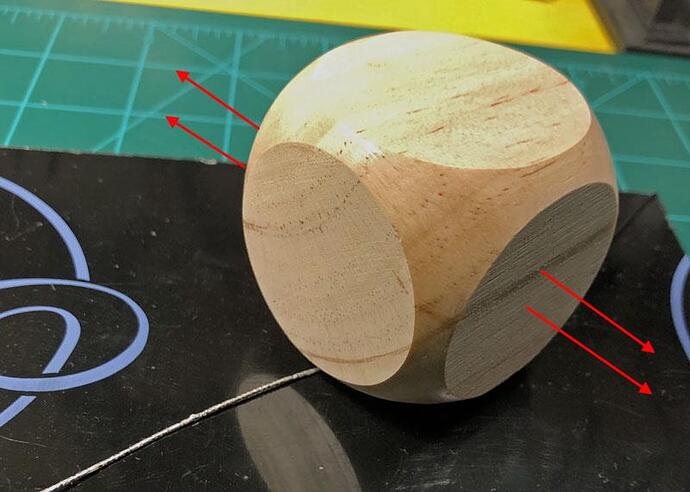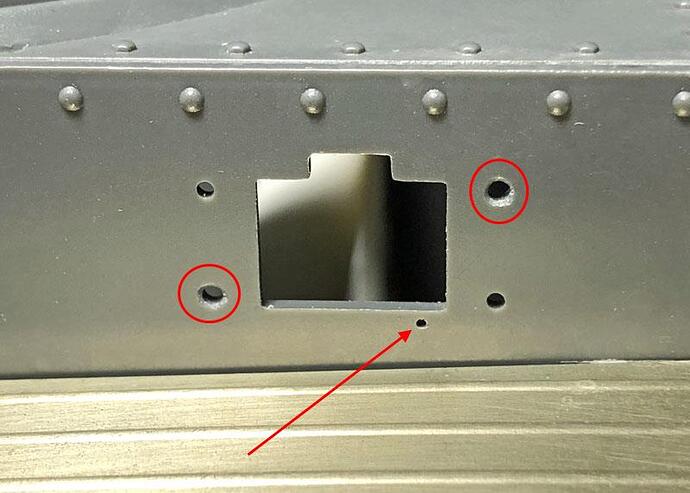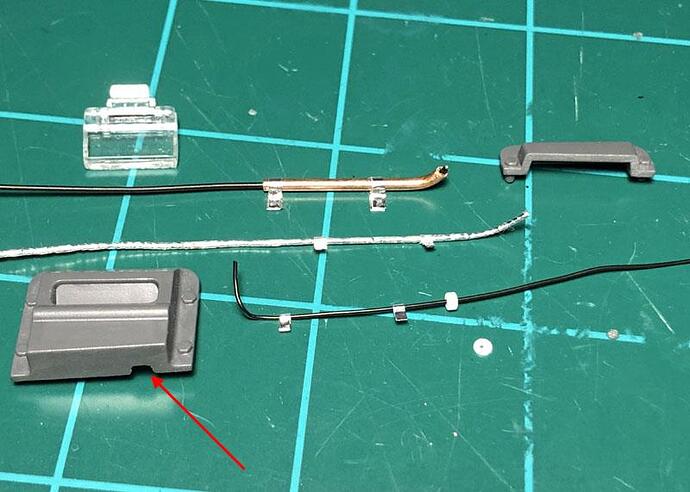Finally, another update. Haven’t been feeling like sitting much lately, took a fall and landed on my side bruising some ribs making moving around, breathing, coughing or bending down very uncomfortable and painful. Mostly all I have been able to do is lay there like a stepped-on roach. I’m better now.
These are the tools used for putting the Radio Operators hatch together. Some of the tools have already been mentioned here before and those are for the photo-etch so I won’t go over these again. Both hatch covers were blemished with sink marks but not deep enough to cause an issue with the existing screw heads after sanding the covers smooth. A new tool here and for me too is the Galaxy Model steel photo-etch counter bore set. This is a tool designed for creating counter bores on the surface of plastic for installing those tiny or larger sized photo-etched screw heads. This is the first time I’ve used this tool and I found that it worked as advertised.
You simply mark a center hole on the existing molded plastic screw head and then remove a suitable width sized steel photo-etch scrapper from the fret and install it on a handle and your ready to go. The scrapper comes with a center pointer that you place into the center hole and then you twist the handle back and forth while adding light pressure against the plastic and checking your progress as you go until the photo-etch screw sits flush or just below the surface of the plastic. I used a micro drill bit at the center hole to help keep the scrapper from walking around, ask me how I know this!
The following was the sequence I used to put together the aforementioned hatch hinges. I used the same method as before for creating the hatch hinges and now used against the homogeneous 50mm thick front superstructure armor plate. Because I’m not going to bother with the interior, I decided not to fiddle around with the photo-etch hatch hinges and cemented both hatches together.
The completed and ready to install Radio Operators hatch covers.
I found that by adding the photo-etch hinges to the hatch assembly it created a situation where there was no room for the hinges.
Material would need to be removed from the inside of the homogeneous 50mm thick front superstructure armor plate in order for the photo-etch hinges to fit and still make room for the hatches.
Yes, it looks a bit sloppy but it worked out in the end. I also added scrap pieces of strip styrene to maintain the hatches flush with the tanks roof plate opening.
The hatch assembly finally installed and workable in the open and closed position.
Still need to address the slight separation between the hatch hinges and homogeneous 50mm thick front superstructure armor plate. I hope that the rest of this build has less issues to conquer as I go. Thank you for dropping by it is much appreciated and hopefully there won’t be a long wait between updates again!
~Eddy 
